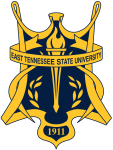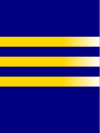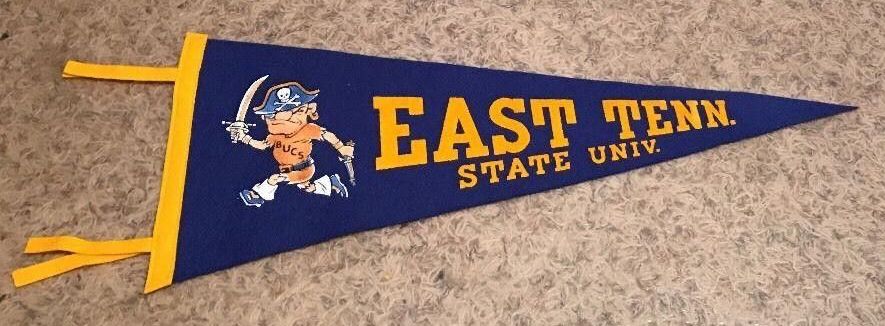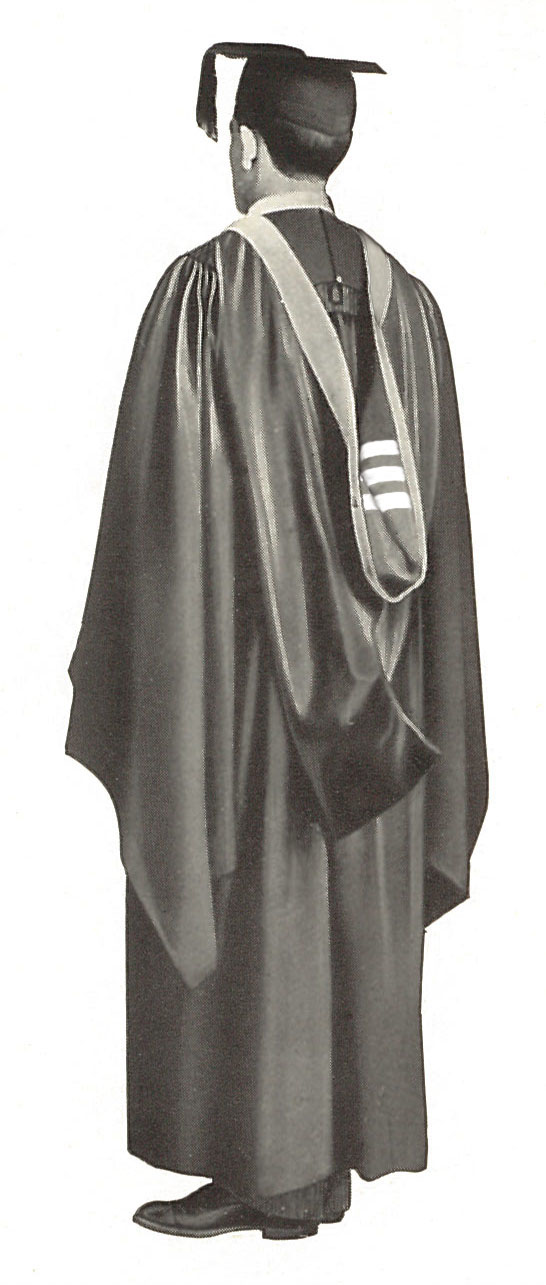East Tennessee State University
Tennessee
1911
Formerly “East Tennessee State Normal School”, “East Tennessee State Teachers College”, and “East Tennessee State College”



After the death of Gardner Cotrell Leonard in 1921, the Intercollegiate Bureau of Academic Costume (IBAC) gradually abdicated the responsibilities it had been given by the Intercollegiate Commission on Academic Costume in 1895. By the 1960s the Bureau had yielded its authority to approve new Faculty colors to the American Council on Education, and was no longer assigning individual hood lining patterns to every school that applied for one.
Perhaps as early as the 1930s the IBAC appears to have made the decision to assign unique hood lining patterns only to colleges or universities that conferred terminal degrees (doctoral degrees and the Master of Fine Arts degree) because these hoods would be worn by collegiate faculty on a regular basis. For institutions that offered only bachelor’s and master’s degrees, the Bureau permitted the use of a two-color “generic” hood lining pattern featuring a single chevron. Since these hoods were considered “souvenirs” of the graduates’ alma mater and would not normally have been worn after commencement, it was of no concern that the generic pattern might duplicate the officially registered hood lining pattern of a school that had already been assigned that pattern in the late 1890s or early 1900s.
A policy of this sort would explain why hood lining lists from the Intercollegiate Bureau cited so many duplicate hood lining patterns. Sometimes a duplicate pattern was nothing more than a record of the school colors of an institution that had never contacted the IBAC, applied to a generic hood lining pattern; other times the duplicate pattern was a generic hood lining the Bureau permitted to be used by a school that only offered bachelor’s and master’s degrees.
Today, many of these colleges and universities now confer terminal graduate degrees. And unfortunately, most are still using their generic hood lining pattern that duplicates the lining pattern the Bureau officially assigned to another institution a century ago.
East Tennessee State University is one example. A 1948 IBAC list included a description of “East Tennessee Teachers College” as having a hood lined blue with a gold chevron. This was probably a record of the college’s colors applied to a hypothetical generic hood. When the college first began conferring Master’s degrees in 1951, the Intercollegiate Bureau assigned “Tennessee State College, East” a generic hood lining of navy blue with a gold chevron, according to an IBAC list from 1972. Later, when East Tennessee State University began conferring doctoral degrees, it continued to use this generic lining pattern without informing the Bureau, which was unfortunate, as this pattern was similar to the hood linings the Intercollegiate Bureau had officially assigned to Simmons College no later than 1918.


The faculty and students of East Tennessee State Teachers College selected blue and gold as the colors of the college in 1925. The shade of blue was navy.

To avoid this duplication problem, the Intercollegiate Registry of Academic Costume has reassigned East Tennessee State University a hood lined navy blue with three gold bars, a lining pattern used by no other institution.